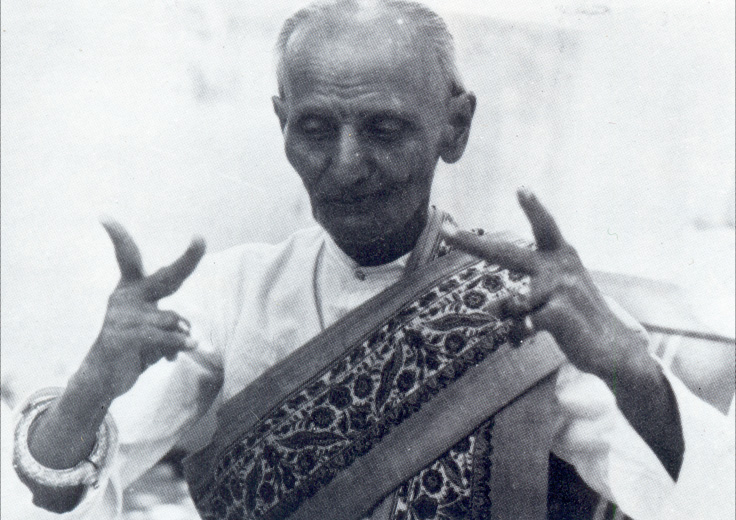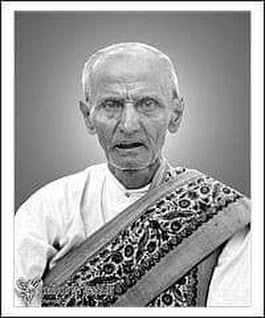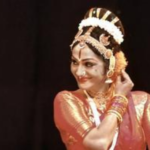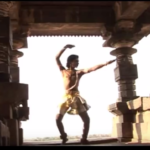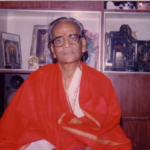After a long hiatus, we return to the world of Dance. Kuchipudi has had numerous exponents of great fame, perhaps none more famous than Vempati Chinna Satyam. And yet, it was his guru who first opened this previously male-dominated art form to females.
Our next Article in our Continuing Series on Andhra Personalities looks into the life and legacy of Vedantam Lakshmi Narayana Sastri.
Background
Vedantam Lakshmi Narayana Sastri was born to Rameshwarayya and Savithriamma in 1880. His birth in the village of Kuchipudi, Krishna District, in present-day Andhra Pradesh would herald a sea-change in the half a millennium old tradition.
He trained deeply in the art of Kuchipudi. He began giving performances at many courts. He was feted by dance lovers, vidvaans, and rajas alike in courts such as Vanaparthi, Jataprolu, Gadwal, Challapalli, and Uyyuru.
Sri Rachappa assisted Vedantam garu to gain an appointment with the Maharaja of Mysore. The royal was very impressed by his performance, and the whole audience gasped when Sastri garu successfully fulfilled Rachappa’s challenge to dance to the numbers 1 through 10 and give the significance. He continued to tour India and demonstrated not only his skill at nrtya, but the variegated forms and expressiveness of Kuchipudi.
The 1930s were a period of great churn in the world of dance especially for Kuchipudi. “He was ever restless in composing something new and creative, which would at the same time catch the eye of the audience. In this process, he started experimenting with unconventional ideas such as making his disciples dance on a wooden stool of barely one foot in length and width. In this he aimed to display the skill and control of the dancer over the intricate footwork in a limited place.” [2, 139] Various aspects were also adapted to the solo format, such as Padis, Padams, Sabdams, and Tarangams. In fact, the Tarangam is the major attraction in Kuchipudi, and Narayana Teertha‘s famed Sri Krishna Leela Tarangam is the source literature for it. [2, 139]
It was during this time that Vedantam Lakshmi Narayana Sastri began introducing the solo format for Kuchipudi. Eventually, he expanded the previously male-dominated artform to include females. Such was the virtuoso skill of this celebrated master of dance that the famed devadasi, Thanjavur Balasaraswati, sought and gained him as a teacher.
Vedantam Lakshmi Narayana garu passed away on July 13th, 1957. In recognition of his contribution to inclusiveness, his vardhanthi is still commemorated by many female dancers even today.
“The credit of solo performances went to Vedantam Lakshmi Narayana Sastry, who choreographed several solo items and laid a strong foundation for the current solo repertoire in Kuchipudi.” [1]
Achievements
- Formally opened Kuchipudi to female students of the dance
- Spread the fame of Kuchipudi in performances throughout North & South India
- Established the solo performance as a feature of the traditional Dance Drama
- Andhra Kala Parishad, Gudivada
- Honoured by Madras Government in 1948 with title ‘Kuchipudi Natya Kala Nidhi’
- Many now-famous Kuchipudi masters were his disciples
Trained famous exponents of Kuchipudi, such as Vempati Chinna Satyam, Vedantam Raghavayya, Jagannatha Sharma, Ramayya Pillai, and Tandava Krishna. Legendary narthakis (female dancers) include Jagadamma, Pushpavati, and, of course, the celebrated Bala Saraswati. [2, 165]
“A master in both theoretical and Practical aspects of dance, music and talas. Lakshminarayana Sastry is credited for introducing solo system of dance in the otherwise traditional dance drama form of Kuchipudi.” [4]
Legacy
“The connoisseurs are indebted to Shad Bharata Kalanidhi Vedantam Laksmi Narayana Shastry, a virtuoso in Mudrabhinayam and Padabhinaya. He excelled in the grammar of Bharata. He was also responsible for spreading Kuchipudi art form throughout the country.” [3, 79]
Vedantam Lakshmi Narayana Sastri, and his son Jagannatha Sarma, opened the Kuchipudi dance form to women. This was a landmark effort by him and served to underscore that culture was not the exclusive preserve of elite men, but open to all men and women with respect for tradition.
That the famed Bharatanatyam danseuse, Balasaraswati, decided to become his student after watching his performance in 1948, is a testament to his skill. He taught her the abhinayam of padams and sabdams.
Dancer and choreographer Uday Shankar remarked that when he saw Vedantam garu dance at 60, it seemed as though the Natyacharya performed as energetically as a 25 year old. Perhaps the best way to sum up his life and legacy is in the words of his own descendant:
“Akella Santhi Sastry, the first girl from Kuchipudi to take dance as a profession, went down the memory lane about her grandfather: ‘He lived in a different world – the world of dance – of Siddhendra Yogi, of Kshetrayya, of Narayana Teertha’. [5]
References:
- http://www.thehindu.com/todays-paper/tp-features/tp-fridayreview/kuchipudi-deciphered/article3218643.ece
- Patinjarayil, Rama Devi. Kuchipudi Dance in Textual Form. Secunderabad: Patinjarayil Publications.2001
- Patinjarayil, Rama Devi. Kuchipudi Kalapas – An Odyssey Rediscovered. Secunderabad: Patinjarayil Publications. 2004
- www.kuchipudi.com/personalities/person3/
- http://www.thehindu.com/news/cities/Vijayawada/Women-dancers-indebted-to-father-of-solo-format-in-Kuchipudi/article11261078.ece
